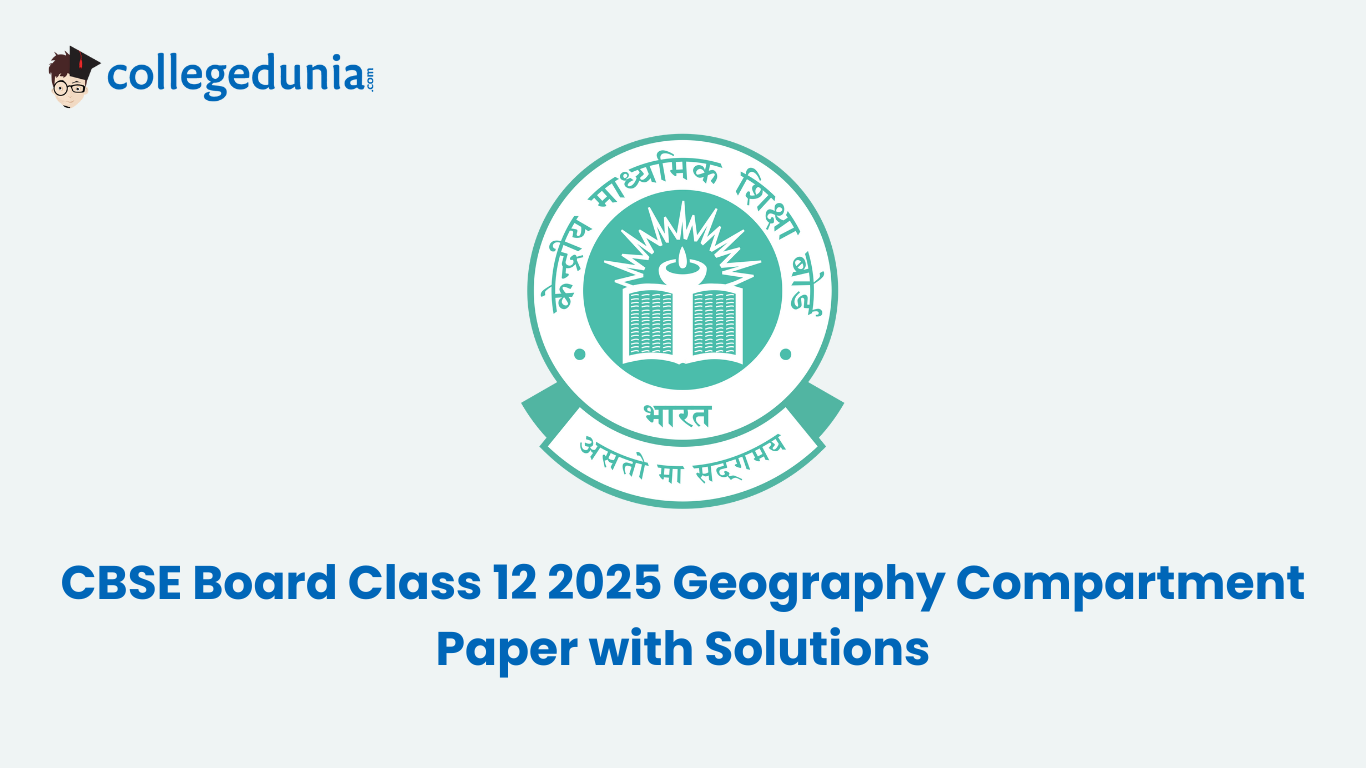The CBSE Class 12 Geography Compartment Exam 2025 will be conducted on 15 July (Tuesday) for 2.5 hours from 10:30 AM to 1:00 PM. CBSE Class 12th Compartment Question Paper 2025 for Geography along with the solutions, will be available here.
The theory paper carries a total of 80 marks, and the internal assessment is for 20 marks, making the exam total out of 100 marks. The exam included key topics like Human Geography, Population and Settlements, Resources and Development,Transport and Communication, and Geographical Perspective on Selected Issues and Problems, which required a strong conceptual understanding, map interpretation skills, and the ability to relate geographical concepts to real-world scenarios.
Also Check: CBSE Class 12 2025 Question Papers With Solution Pdf
CBSE Class 12 Geography Compartment Question Paper 2025
| CBSE Geography Compartment Question Paper 2025 | Download PDF | Check Solution |

Difficulty Level of CBSE Compartment Exam 2025 (Expected)
The CBSE Class 12 Compartment Exam 2025 is expected to be a bit easier than the 2024 exam. Most questions will probably be from key concepts and can be easier to understand and solve.
| Aspet | Compartment Exam 2024 | Compartment Exam 2025 (Expected) |
| Overall Difficulty Level | Moderate | Moderate to Slightly Easy |
| 1-mark & 2-mark Questions | Mostly Easy and Direct | Expected to be Easy and Concept-Based |
| 3-mark Questions | Mixed – Some were straightforward, some tricky | Expected to be Conceptual but Manageable |
| 4-mark Questions | Slightly Challenging, Required Deeper Understanding | May Include Application-Based but Familiar Questions |







Comments